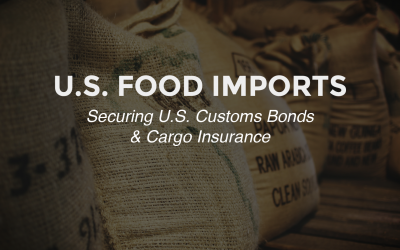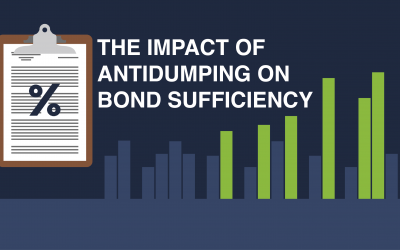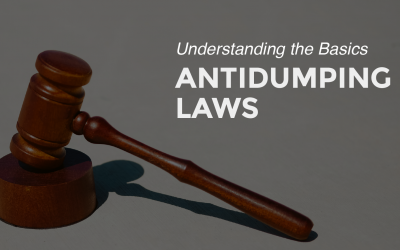Since the Carriage of Goods by Sea Act (COGSA) was implemented, federal courts have struggled to provide a clear and specific definition of a package for the purpose of carrier liability.
The term package is not defined in COGSA, and there is no legislative history to help determine its meaning. Some courts have held that the term should be interpreted according to its plain, ordinary meaning.
Carriers and their insurers have attempted to limit liability by having the courts treat a container or pallet with its contents as a package rather than individual cartons in the container or pallet as separate packages.
There are general standards that most courts appear to apply in determining what is meant by the term “package.” These standards vary according to whether or not the cargo is shipped in a container.
Containerized Shipments
Containers create problems when defining the term package because it is complicated whether a carton inside a container or the container itself constitutes a package. A similar problem arises with the shipment of multiple units on a pallet or other device for the shipment of multiple units. Unless the packaging is specified in the bill of lading, carriers will owe $500 per container.
If parties have incorporated COGSA by contract, some courts have held that the parties can define “package” in any manner they please, even if the effect reduces the carrier’s liability below what COGSA would otherwise allow. Therefore, the parties’ description of the goods can have the most significant weight. Parties to bills of lading should expect to be held to the number that appears under the heading referring to the number of packages.
In Mitsui & Co. v. American Export Lines, the court decided to review the bill of lading to see how the parties described the cargo. If the bill of lading reveals the number of individual packages in the container, then these are the packages for limitation purposes. However, if the bill of lading does not disclose the number of packages in the container, then the container itself could be determined the package for limitation purposes.
In Leather’s Best, Inc. v. S.S. Mormaclynx, the court considered many factors before making its decision: the ownership of the container, the identity of the party loading the container, the method for calculating freight, the size of the container, the description of the goods in the bill of lading, and the relative economic power of the parties. The court concluded that the container itself was not a package but that each of the ninety-nine bales of leather packed into the container constituted a separate package.
In Royal Typewriter C. v. M/V Kulmerland, the cargo inside the container consisted of adding machines packed in single corrugated cartons sealed with thin paper tape. Because these cartons could not have withstood a voyage outside of the container, the court held that the container was the package.
When goods are packaged, the packages are put into a container or shipped on pallets, and the bill of lading discloses the number of packages within the container or on the pallet, the COGSA package is not the container or the pallet. The COGSA packages are each package within the container or on the pallet.
Non-Containerized Shipments
When non-containerized cargo is fully boxed or crated, each box or crate will generally constitute a package. This is true regardless of the size and weight of the cargo.
In the case of Robert C. Herd & Co. v. Krawill Machinery Corp, the court treated a fully-crated 19-ton press as a package. Similarly, the court held that a 32-ton steel roll packed in a 48-cubic foot packing case constituted a single package.
Customary Freight Units
Cargo that is shipped without any packaging whatsoever is generally treated as “not shipped in packages.” Thus, a free-standing or uncrated item is not a package. The limit of liability is limited to $500.00 per customary freight unit if goods are not shipped in packages.
Before considering whether the customary freight unit test is to be applied, the court must first determine whether the shipment constitutes a package. Once it is determined that the shipment is a package, there is no need to consider the customary freight unit. The term customary freight unit refers not to the physical shipping unit, but to the quantity, weight or measurement of the cargo customarily used as the basis for calculating the freight rate to be charged. A customary freight unit relates to how carriers collect money; it may have nothing to do with the cargo’s physical attributes.
In Hanover Insurance Co. v. Shulman Transport Enterprises, Inc, a press weighing over 1,000 pounds, shipped in open view, unboxed, uncrated, and without any shipping skids, was held not to be a package. Freight charges were 91 cents per cubic foot for 594 cubic feet, a total of $540.54. Application of the freight unit rule would have resulted in damages of $297,000.00, which the court found would be an absurd result. The appellate court sustained the trial court’s assessment of carrier liability for actual damage incurred in the amount of $8,346.62.
The Benefits of Cargo Insurance
The uncertainty resulting from the federal courts not providing a consistent definition of a package is avoidable for importers willing to purchase cargo insurance.
Carrier limit of liability prevents importers from receiving full reimbursement for their lost, damaged, or delayed goods. Those who secure a cargo insurance policy need not worry about how their lost, damaged, or delayed cargo is classified package-wise.
To file a cargo insurance claim, importers must only supply proof of value and loss. Claims are typically paid within 30 days, and importers are not required to prove carrier negligence. Therefore, investing in cargo insurance can save importers a lot of time and money.
Contact the TRG team today to receive a free marine cargo insurance quote.







